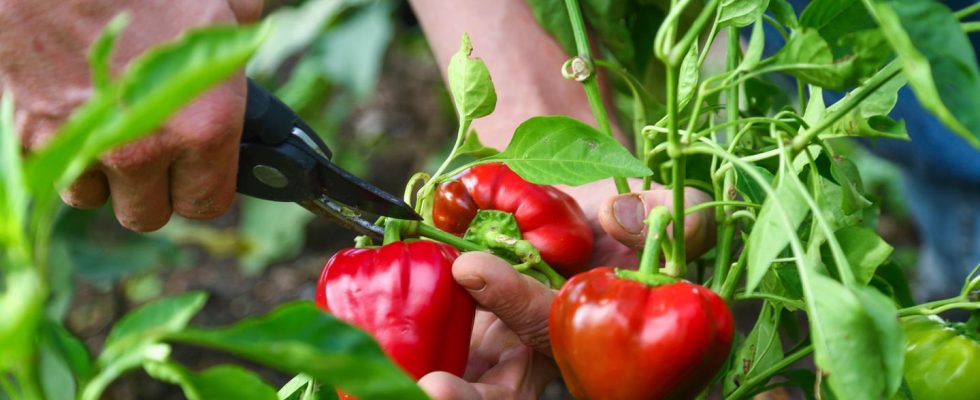Gardening tips
Planting peppers: How to get the sensitive sun-lovers to ripen
Peppers can safely be described as difficult to grow. The sun-drenched fruits are the divas in the vegetable patch. The article reveals how to tackle it correctly.
© tomazl / Getty Images
Peppers are anything but easy to care for: they freeze quickly, are constantly thirsty, but the crunchy vegetable doesn’t like rain at all. A real challenge for many hobby gardeners. With these tricks you can get the most out of your vitamin C bombs.
Planting peppers: From pre-cultivation to sowing
If you know that peppers come from very warm and humid regions, it doesn’t take much imagination and even less gardening know-how to realize that the plants like exactly these conditions in our latitudes. However, it is still not true that the popular vegetable necessarily only makes it big in the greenhouse. Although many pepper varieties have a much better chance in houses that are protected from the rain and at a comfortable temperature. Especially the young plants that have been painstakingly pre-cultivated on the windowsill at home. And that’s how it works.
- Depending on your taste and preferences, buy pepper seeds from specialist retailers
- In the March Distribute several seeds in a planting bowl and cover them thinly with soil
- Pour in the seeds and cover the bowl with a transparent hood
- Place the pre-culture in an evenly warm and bright location (approx. 25 degrees Celsius)
- After about 4 weeks, prick out small pepper plants and distribute them into pots
- Young plants from mid-April move to an unheated greenhouse
- Alternative: Plant after the Ice Saints in a sunny bed with humus-rich soil
By the way, the vast majority of pepper varieties don’t have the same problem with proximity. That’s why you should pay attention to the spacing when planting, whether in a bed or a greenhouse. This is how it should be between the plants 50 centimeters “safety distance” be granted. In the best case scenario, the rows are even around 60 centimeters apart if the bed size is appropriate. Friends of balcony gardens should grab the largest possible flower pot and bed the plants in ordinary vegetable soil. Here too, you have a significantly better chance of a rich harvest if the bucket is protected from the rain Roof over your head has. Similar to tomatoes, rain is also a gateway for various fungal cultures that transmit diseases.
If you want to skip the steps taken up to this point, it is best to use a pepper plant that is already bearing (for example Exotic heart). But the same applies to them: keep them warm and, if possible, out of the rain.
This is how you can help the garden diva get going
Cultivating peppers requires a lot of patience. In contrast to tomatoes, this crunchy vegetable grows very slowly. Something liquid fertilizer Watering every two weeks and daily (especially in the summer months) are therefore mandatory. With a layer of lawn mulch, evaporation can be reduced somewhat and the soil can be kept cozy and warm. The comfortable temperature of the vast majority of wild peppers is between 25 and 28 degrees. Temperatures that in our latitudes can only be achieved with a greenhouse. If you don’t have space for a greenhouse, you need a little imagination.
Protect peppers (and tomatoes) from cold and rain
- Stock up Protective covers made of foil and put them over the individual plants. These hoods are usually perforated so that the vegetables are adequately ventilated. The films not only keep the heat, they also protect the sensitive peppers and tomatoes from rain.
- Use one Cold frameto protect the young plants from cold and rain in the first days and weeks after moving outdoors. As soon as the plants are too tall, tomato or pepper caps will help again.
- The third option to help peppers (or tomatoes) grow while protecting against disease is a Film greenhouse. They come in different sizes and shapes. The so-called is suitable for peppers Tunnel greenhouse at. Practical: Film greenhouses have a fixed structure and can be fixed to the ground with small anchor hooks. Small ventilation windows prevent tropical temperatures, which the pepper plants also don’t like in the long run.
You might also be interested in:
This article contains so-called affiliate links. Further information are available here.


